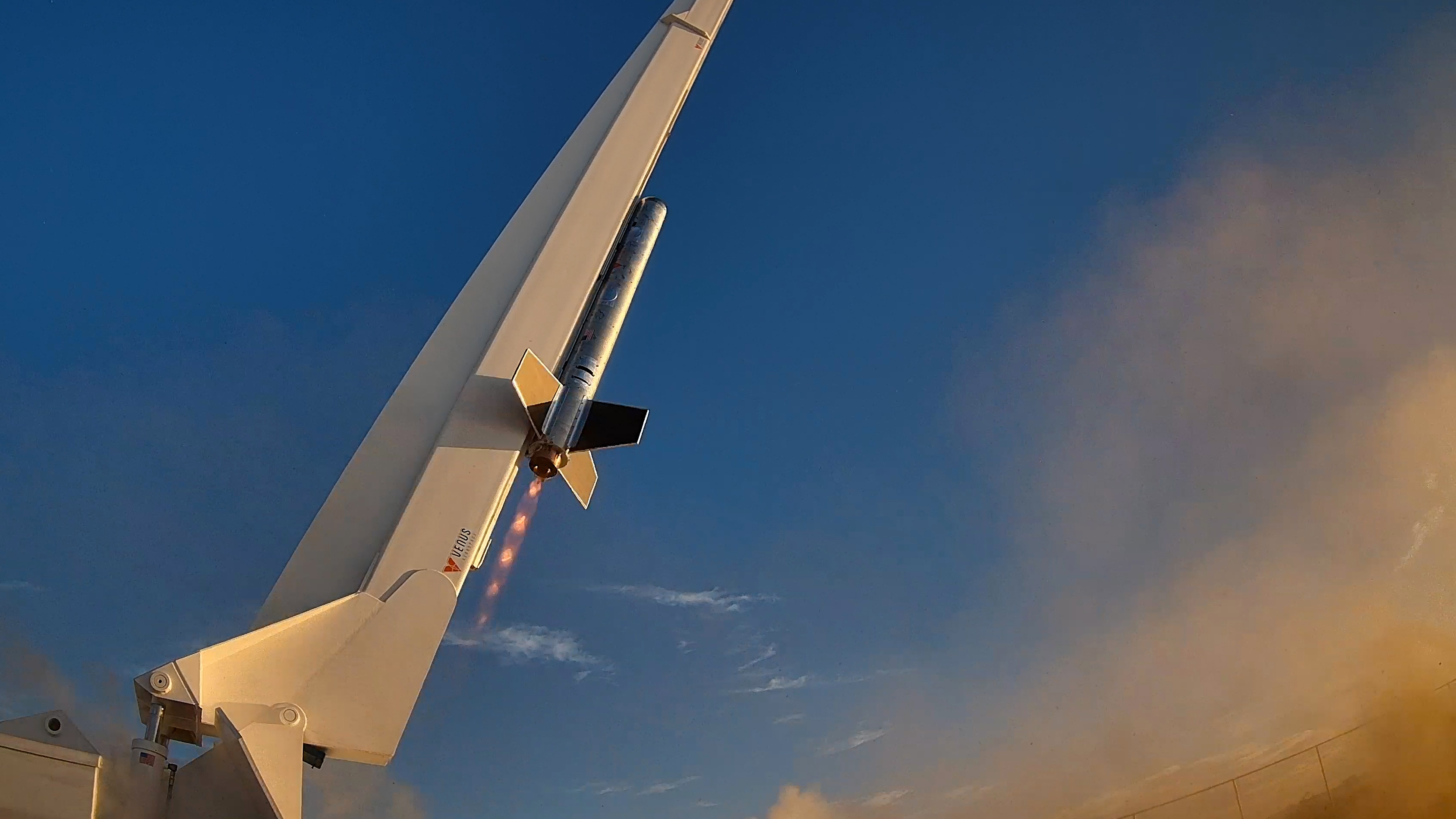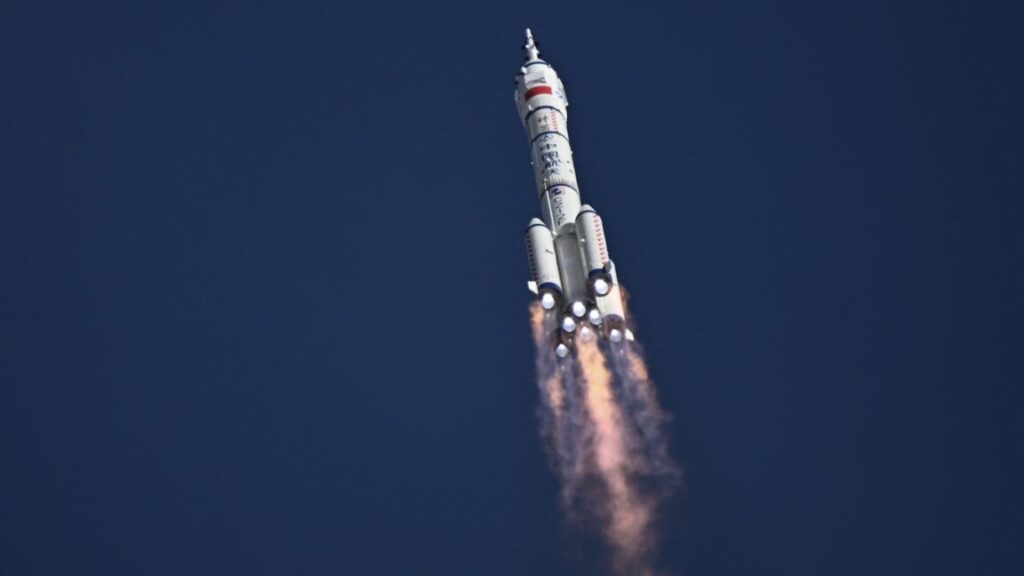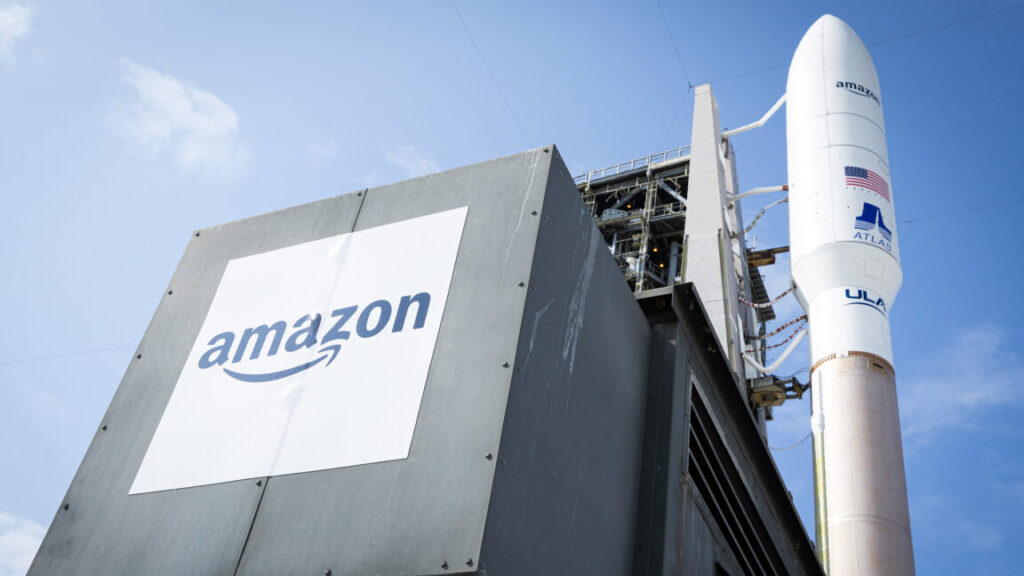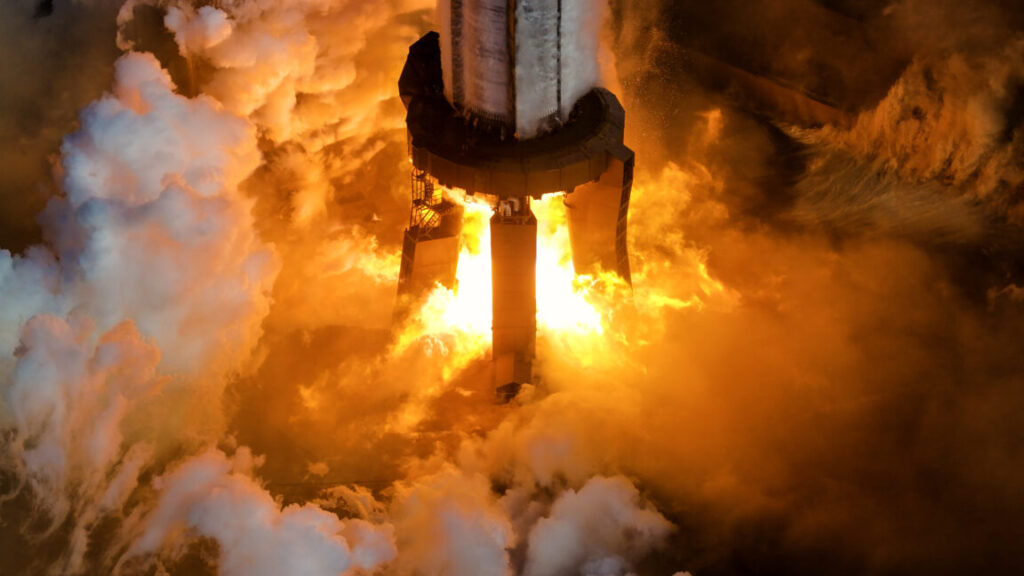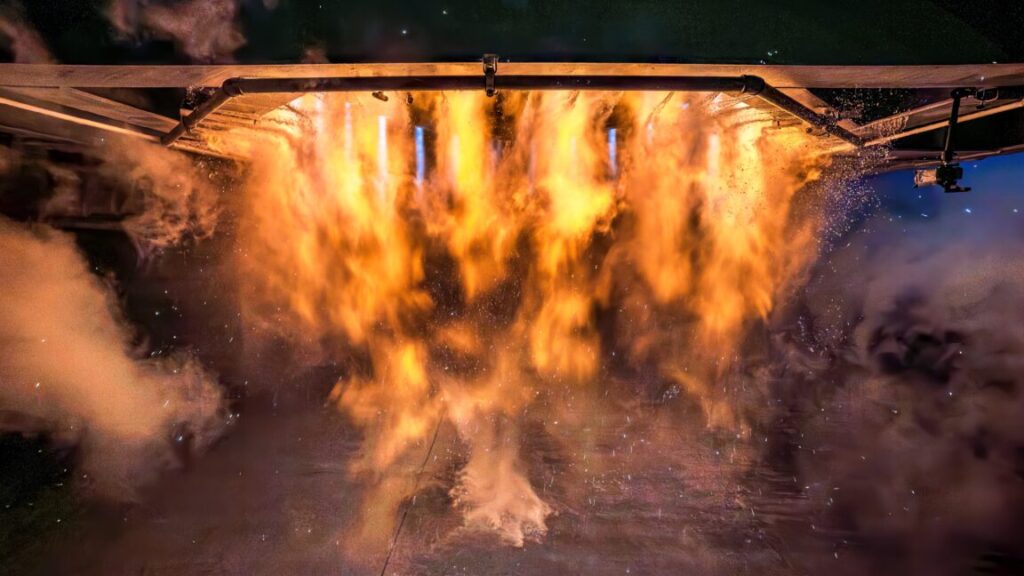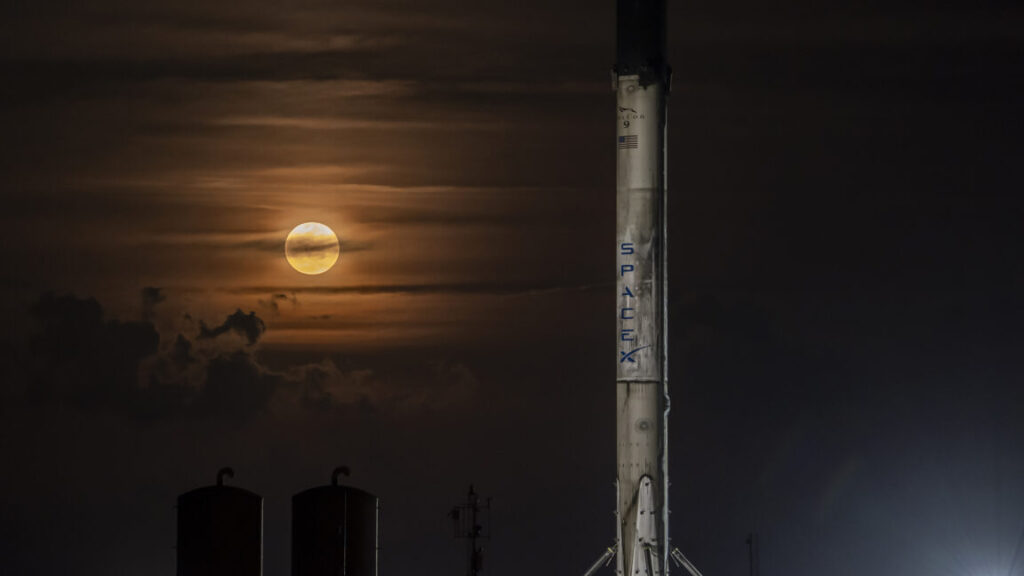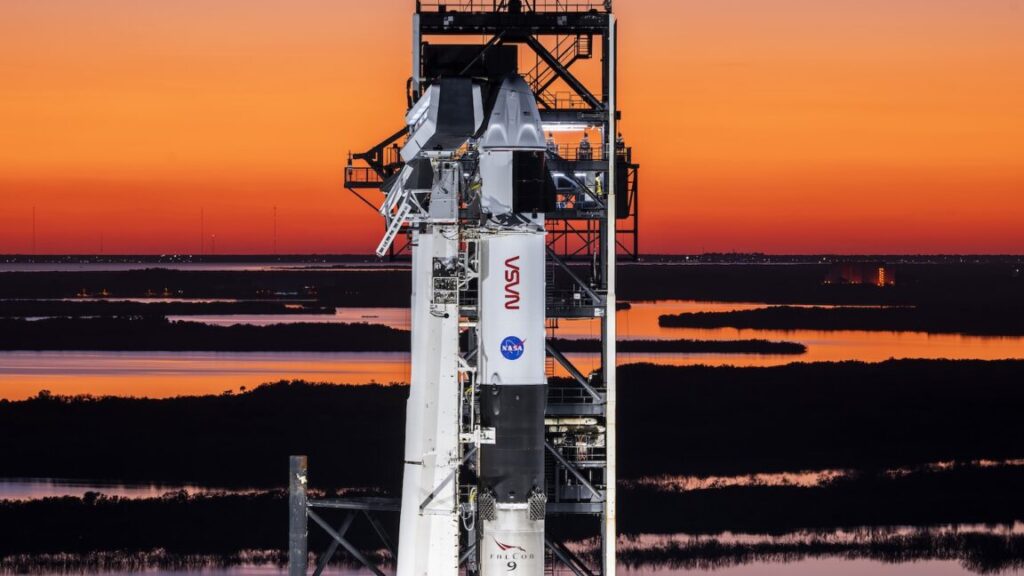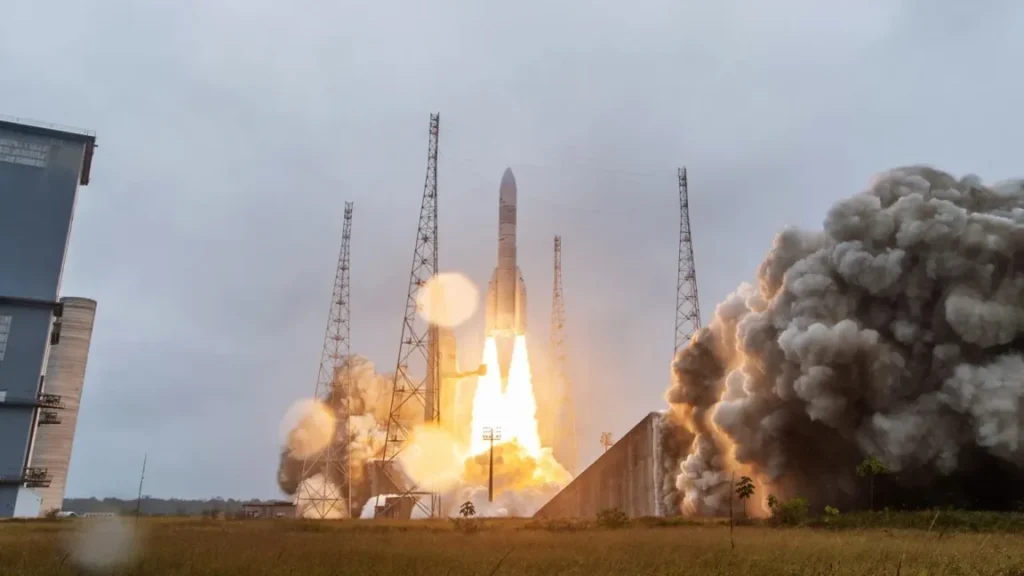Rocket Report: Northrop backs Firefly and names its rocket; Xodiac will fly no more
“This is a design change that I really had to push the team very hard to do.”
An artist’s rendering of the Eclipse rocket on the launch pad at Wallops. Credit: Northrop Grumman
Welcome to Edition 7.46 of the Rocket Report! As I write this, the date is May 29. From a meteorological standpoint, “spring” ends in fewer than three days. Summer lasts from June 1 through August 31. Consider this a public service announcement for launch companies targeting “spring” and “summer” launches for various missions.
As always, we welcome reader submissions, and if you don’t want to miss an issue, please subscribe using the box below (the form will not appear on AMP-enabled versions of the site). Each report will include information on small-, medium-, and heavy-lift rockets as well as a quick look ahead at the next three launches on the calendar.

Xodiac rocket makes its final flight. Originally built by Masten Space Systems, the suborbital Xodiac rocket had flown 175 successful missions before a flight from Mojave, California, on Wednesday. But now, it will fly no more. “While the vehicle remained within its planned flight envelope, it detected an anomalous condition and commanded a flight termination,” said Astrobotic, which acquired Masten a couple of years ago. “This resulted in a rapid descent and caused a loss of the vehicle upon impact with its launch pad.”
Now entering the Xogdor waiting room … There were no injuries or significant damage to the company’s infrastructure in Mojave. The vehicle is essentially a hopper and has been used in recent years by various customers, including companies building commercial lunar landers, to test their hazard-detection systems. Astrobotic has been working on a larger version of Xodiac, which it is calling Xogdor.
Chinese firm tests Grasshopper-like rocket. Chinese private rocket firm Space Epoch said Thursday it had successfully run a flight recovery test, Reuters reports. Beijing-based Space Epoch, or SEPOCH, said its Yuanxingzhe-1 verification rocket was launched at 4: 40 am from a sea-based platform off the waters of the eastern province of Shandong. The rocket soared upward, its engines briefly shutting down after the peak of its trajectory, then reigniting as it began its vertical descent to enter the Yellow Sea in a circle of fire, a video posted on Space Epoch’s WeChat account showed.
Chasing the Falcon 9 … The flight lasted 125 seconds, reaching a height of about 2.5 km (1.6 miles), the company said. Last year, another Chinese launch company, LandSpace, completed a 10-km (6.2-mile) VTVL test, marking China’s first in-flight engine reignition in descent. Both companies are pushing to make debut tests of their reusable rockets later this year.
The easiest way to keep up with Eric Berger’s and Stephen Clark’s reporting on all things space is to sign up for our newsletter. We’ll collect their stories and deliver them straight to your inbox.
Florida company aims to acquire F-4 Phantoms for launch. Starfighters International, a company best known for doing air shows, is now seeking to move into air launch. Based at Kennedy Space Center, the company is in the process of acquiring a dozen F-4 Phantoms, a Cold War-era fighter jet, TWZ reports. Starfighters International is seeking to acquire the F-4 aircraft from South Korea.
Press F-4 to doubt? … Based upon the information in a filing with the Securities and Exchange Commission, the company is considering both a suborbital and orbital launch capability for small satellites, which would fly to space on a small rocket deployed from the F-4 Phantom. In my experience, air-based launch systems always seem like a better idea on paper than in reality. Perhaps there is some potential for hypersonics here, but I would be shocked to ever see a satellite launched into orbit from a fighter jet. (submitted by Biokleen)
Rocket Lab acquires Geost. Rocket Lab is expanding deeper into the defense sector with the acquisition of Geost, a supplier of electro-optical and infrared sensor payloads used in US military satellites, Space News reports. In a deal announced Tuesday, Rocket Lab will acquire Geost from the private equity firm ATL Partners for $125 million in cash and $150 million in stock, with an additional $50 million in potential cash payments tied to revenue targets in 2026 and 2027.
Seeking mil money … The acquisition gives Rocket Lab access to satellite sensor technology used by the US Department of Defense for missile-warning systems and space surveillance—capabilities that could help it win lucrative Pentagon contracts. “The acquisition of Geost will bring on board critical technology and payloads that are relied upon by the Department of Defense,” said Rocket Lab’s chief executive, Peter Beck. Rocket Lab has been seeking to expand its military contracts in recent years, and this move is consistent with that.

Northrop names rocket, invests in Firefly. Northrop Grumman announced Thursday that it is investing $50 million into Firefly Aerospace to further development of a medium-lift rocket. The company also revealed that the rocket will be named “Eclipse.” The rocket will be capable of launching up to 16,300 kg of cargo to low-Earth orbit or 3,200 kg of cargo to geosynchronous transfer orbit, and initially it will likely be used for Cygnus cargo missions to the International Space Station.
A match made in heaven? … Eclipse will use the same first stage Firefly is developing for the Northrop Grumman Antares 330 rocket. Both launch vehicles will use seven of Firefly’s Miranda engines. The new rocket is expected to make its debut no earlier than 2026 (and, if history is any guide, probably later). “Eclipse gives customers the right balance of payload capacity and affordability,” Northrop Vice President Wendy Williams said in a statement. “Our partnership with Firefly builds on our capacity to provide crucial space-based communication, observation, and exploration for civil and national security customers.”
China launches asteroid mission. A Chinese spacecraft built to collect specimens from an unexplored asteroid and return them to Earth launched Wednesday from a military-run spaceport in the country’s mountainous interior, Ars reports. The liftoff aboard a Long March 3B rocket from the Xichang launch base kicked off the second mission in a series of Chinese probes to explore the Solar System. This mission, designated Tianwen-2, follows the Tianwen-1 mission, which became the first Chinese spacecraft to land on Mars in 2021.
Sending samples home … China has two objectives for Tianwen-2. First, Tianwen-2 will fly to a near-Earth asteroid designated 469219 Kamoʻoalewa, or 2016 HO3. Once there, the spacecraft will retrieve a rocky sample from the asteroid’s surface and bring the material back to Earth in late 2027 for analysis in labs. After the spacecraft releases its sample carrier to land on Earth, Tianwen-2 will change course and head to a mysterious comet-like object found between the orbits of Mars and Jupiter.
Next Kuiper launch gets a June date. United Launch Alliance said Thursday that an Atlas V rocket will launch its second batch of Amazon’s Project Kuiper satellites next month. The Atlas V 551 rocket launch is planned for 2: 29 pm ET on June 13 from Space Launch Complex-41, pending range approval.
A speedy turnaround … Amazon also confirmed that it has finished processing the Kuiper satellites for the launch, saying all 27 spacecraft have been integrated onto the rocket. Getting to space in June with this mission will mark an impressive turnaround from Amazon, given that its KA-01 mission, also with 27 Internet satellites, launched on April 28.
SpaceX set to launch another GPS satellite. SpaceX is gearing up to launch a Global Positioning System satellite for the US military on Friday from Cape Canaveral Space Force Station, Florida, marking another high-profile national security mission that shifted from United Launch Alliance’s Vulcan to the Falcon 9 rocket, Space News reports. The launch of GPS III SV-08—the eighth satellite in the GPS III constellation—was originally assigned to United Launch Alliance but was switched to SpaceX as the military prioritizes getting advanced anti-jamming capabilities into orbit as quickly as possible.
Gotta go fast … This marks the second consecutive GPS III satellite to be switched from ULA to SpaceX, following December’s launch of GPS III SV-07. ULA’s Vulcan, which received certification to launch national security missions, continues to face delays and has accumulated a backlog of military launches. In a press call this week, Space Force officials said the mission was executed on an unusually accelerated timeline. Launch planning for GPS III SV-08 kicked off in February, with Lockheed Martin receiving a formal request on February 21 and SpaceX following on March 7, just under three months ahead of liftoff. That’s an extraordinary pace for a national security launch, they said, which typically takes 18 to 24 months from contract award.

Another Starship launch, another second-stage issue. SpaceX made some progress on another test flight of the world’s most powerful rocket Tuesday, finally overcoming technical problems that plagued the program’s two previous launches, Ars reports. But minutes into the mission, SpaceX’s Starship lost control as it cruised through space, then tumbled back into the atmosphere somewhere over the Indian Ocean nearly an hour after taking off from Starbase, Texas, the company’s privately owned spaceport near the US-Mexico border. During the rocket’s two previous test flights—each using an upgraded “Block 2” Starship design—problems in the ship’s propulsion system led to leaks during launch, eventually triggering an early shutdown of the rocket’s main engines.
Not great, not terrible … On both flights, the vehicle spun out of control and broke apart, spreading debris over an area near the Bahamas and the Turks and Caicos Islands. The good news is that that didn’t happen on Tuesday. The ship’s main engines fired for their full duration, putting the vehicle on its expected trajectory toward a splashdown in the Indian Ocean. For a short time, it appeared the ship was on track for a successful flight. The bad news is that Tuesday’s test flight revealed more problems, preventing SpaceX from achieving the most important goals Musk outlined going into the launch, including testing Starship’s reentry tiles.
Elon Musk talks Starship version 3. In an interview with Ars Technica, SpaceX founder Elon Musk said he expects that an upgraded version of Starship—essentially Block 3 of the vehicle with upgraded Raptor engines—should fly before the end of the year. The business end of the rocket will have a sleek look: “The upgraded Raptors have a complete redesign of the aft end of the booster and the ship,” Musk said. “So, because we don’t need the heat shield around the upper portion of the engine, it greatly simplifies the base of the booster and the ship. It’ll look a little, frankly, naked, especially on the booster side, because the engines will just be there, like, not with stuff around them.”
A difficult upgrade to work through … “This is a design change that I really had to push the team very hard to do, to get rid of any secondary structure, and any parts that could get burned off because there will be no heat shield,” Musk added. “So it’ll be very clear when we have a Raptor 3. Version 3 of the Ship and Booster has quite a radical redesign.” Given the challenges that version 2 of Starship has faced with its recent flights, an upgrade in the overall design appears to be much-needed.
Next three launches
May 30: Falcon 9 | GPS III SV-08 | Cape Canaveral Space Force Station, Florida | 17: 23 UTC
May 31: New Shepard | NS-32 | Launch Site One, West Texas | 13: 30 UTC
May 31: Falcon 9 | Starlink 11-18 | Vandenberg Space Force Base, California | 20: 01 UTC

Eric Berger is the senior space editor at Ars Technica, covering everything from astronomy to private space to NASA policy, and author of two books: Liftoff, about the rise of SpaceX; and Reentry, on the development of the Falcon 9 rocket and Dragon. A certified meteorologist, Eric lives in Houston.
Rocket Report: Northrop backs Firefly and names its rocket; Xodiac will fly no more Read More »





